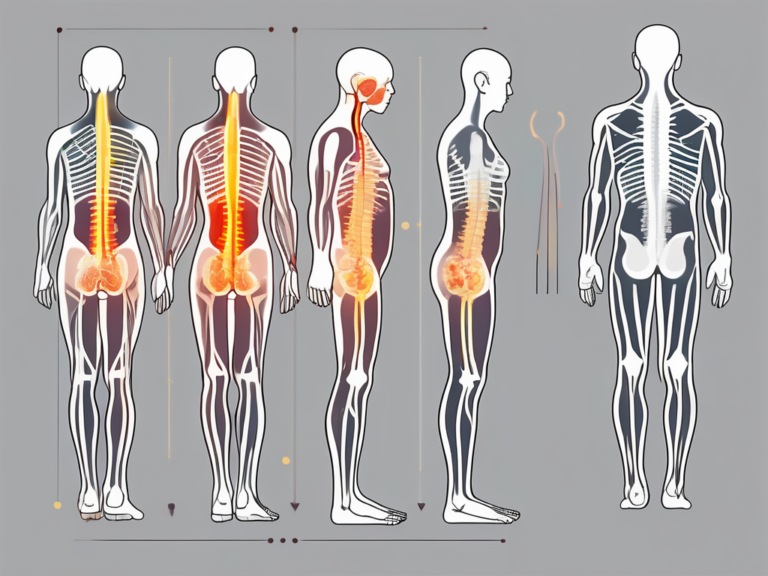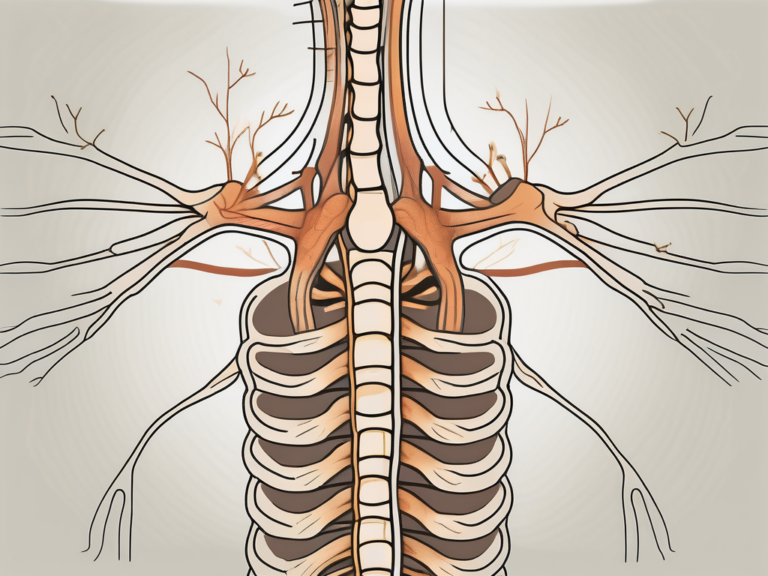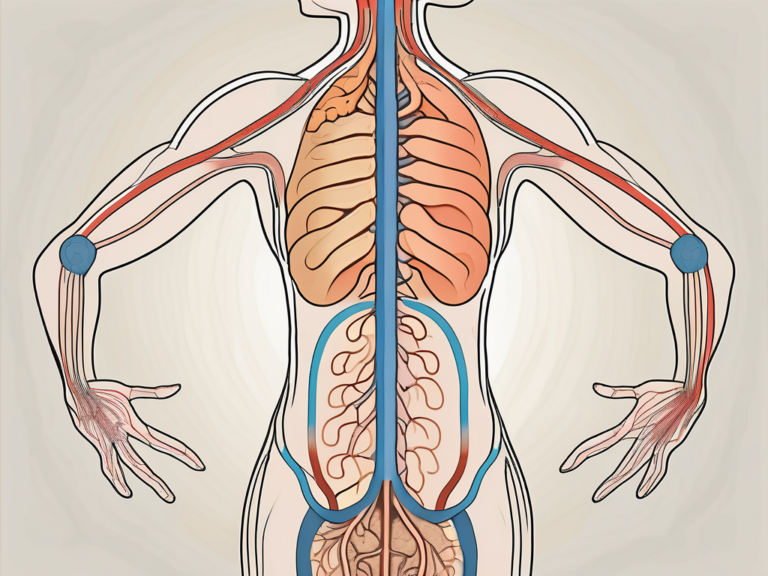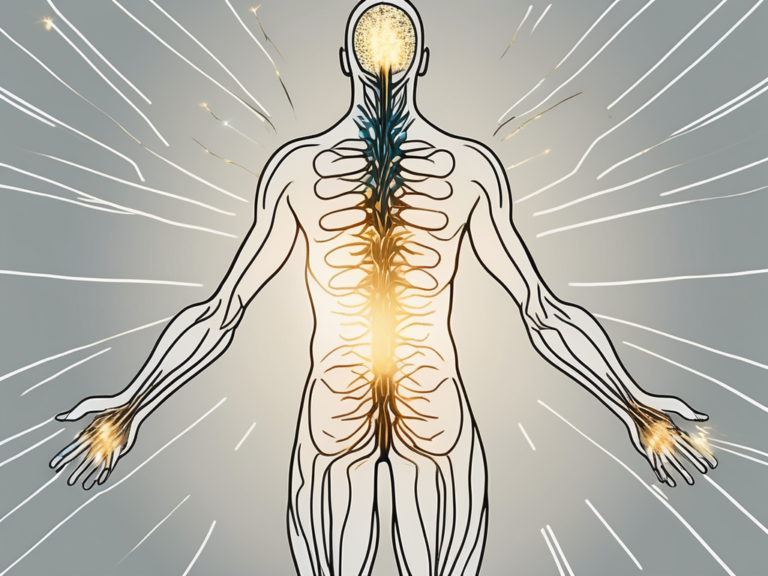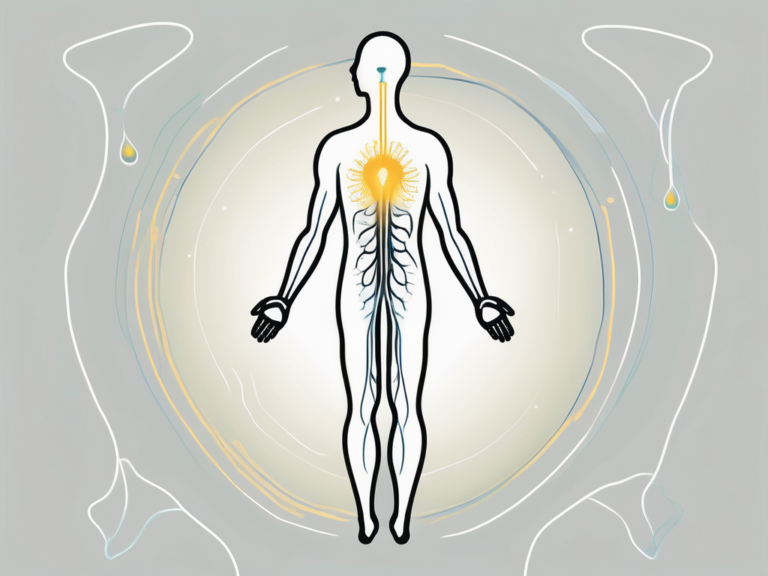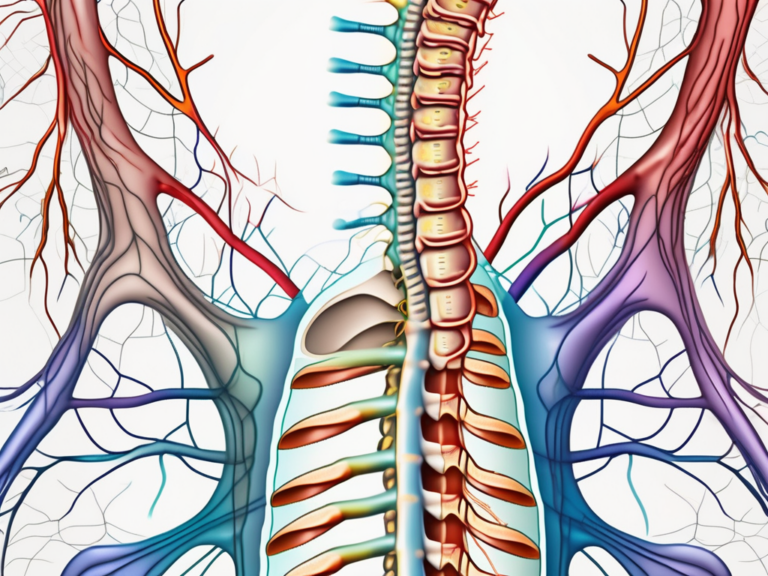What Is a Sacral Nerve Stimulator?
A sacral nerve stimulator is a medical device that is used to manage certain disorders and conditions that affect the sacral nerve. In order to understand the importance and potential benefits of this device, it is essential to first understand the role of the sacral nerve in the human body.
Understanding the Sacral Nerve
The sacral nerve is a crucial component of the nervous system, specifically the peripheral nervous system. It is a collection of nerve fibers that originate from the spinal cord and extend down to the pelvis. These nerves play a vital role in various bodily functions, including the control of the bladder, bowel, and pelvic floor muscles.
The sacral nerve is a complex network of nerves that work together to ensure proper communication between the brain and the pelvic region. It is responsible for transmitting signals that allow for the coordination of bladder emptying, bowel movements, and the contraction and relaxation of the pelvic floor muscles.
When the sacral nerve is functioning properly, it ensures that the bladder can empty efficiently, preventing urinary retention or incontinence. It also helps regulate bowel movements, ensuring that waste is eliminated from the body in a timely manner. Additionally, the sacral nerve plays a crucial role in maintaining the strength and coordination of the pelvic floor muscles, which are essential for supporting the organs in the pelvic region and maintaining urinary and bowel continence.
The Role of Sacral Nerve in the Human Body
The sacral nerve is responsible for transmitting signals between the brain and the various organs and muscles in the pelvic region. It plays a central role in regulating bladder emptying, bowel movements, and the contraction and relaxation of the pelvic floor muscles, which are essential for normal urinary and bowel function.
When the sacral nerve receives signals from the brain indicating the need to empty the bladder, it sends messages to the bladder muscles to contract and expel urine. Similarly, when the brain signals the need for a bowel movement, the sacral nerve coordinates the relaxation of the anal sphincter muscles and the contraction of the rectum, allowing for the passage of stool.
The sacral nerve also plays a crucial role in the coordination of the pelvic floor muscles. These muscles work together to support the organs in the pelvic region, maintain continence, and provide stability during activities such as coughing, sneezing, or lifting heavy objects. The sacral nerve ensures that these muscles contract and relax in a coordinated manner, allowing for optimal function.
In addition to its role in urinary and bowel function, the sacral nerve is also involved in sexual function. It plays a role in the sensation and control of the pelvic organs during sexual activity, contributing to sexual pleasure and orgasm.
Common Disorders of the Sacral Nerve
Unfortunately, the sacral nerve can be affected by certain medical conditions, leading to dysfunction and disruption of these important bodily functions. Examples of common disorders that can affect the sacral nerve include urinary incontinence, fecal incontinence, and pelvic pain.
Urinary incontinence is a condition characterized by the involuntary leakage of urine. It can occur due to a variety of factors, including damage to the sacral nerve. When the sacral nerve is not functioning properly, the signals between the brain and the bladder may be disrupted, leading to bladder dysfunction and urinary incontinence.
Fecal incontinence, on the other hand, refers to the inability to control bowel movements, resulting in the involuntary passage of stool. Like urinary incontinence, fecal incontinence can be caused by sacral nerve dysfunction. When the sacral nerve fails to coordinate the relaxation of the anal sphincter muscles and the contraction of the rectum, fecal incontinence can occur.
Pelvic pain is another common disorder associated with sacral nerve dysfunction. It can manifest as chronic pain in the pelvic region, lower back, or buttocks. The exact cause of pelvic pain can vary, but sacral nerve dysfunction is often a contributing factor. When the sacral nerve is not functioning properly, it can result in abnormal sensations and pain in the pelvic area.
It is important to note that these disorders can have a significant impact on a person’s quality of life. They can cause physical discomfort, emotional distress, and social embarrassment. Fortunately, there are various treatment options available for sacral nerve disorders, ranging from conservative measures such as pelvic floor exercises and medication to more invasive interventions like nerve stimulation or surgery.
In conclusion, the sacral nerve is a vital component of the nervous system that plays a crucial role in regulating bladder and bowel function, as well as the coordination of the pelvic floor muscles. When the sacral nerve is affected by disorders, such as urinary incontinence, fecal incontinence, or pelvic pain, it can significantly impact a person’s well-being. Seeking medical attention and exploring appropriate treatment options can help manage these conditions and improve quality of life.
The Science Behind Sacral Nerve Stimulation
Sacral nerve stimulation is a medical technique that has been developed to address the symptoms associated with disorders of the sacral nerve. This innovative approach involves the use of a sacral nerve stimulator device, which delivers electrical stimulation to the sacral nerve, helping to restore normal functioning.
The sacral nerve is a crucial component of the autonomic nervous system, responsible for regulating various functions in the lower abdomen and pelvic region. When this nerve is not functioning properly, it can lead to a range of debilitating symptoms, including urinary and bowel incontinence, pelvic pain, and muscle dysfunction.
The mechanism behind sacral nerve stimulation is fascinating. The sacral nerve stimulation device consists of two main components: a small generator and one or more thin wires, called leads, that are implanted near the sacral nerve. The generator, typically placed under the skin in the upper buttock area, delivers mild electrical pulses to the sacral nerve, stimulating the nerve fibers and promoting the appropriate functioning of the bladder, bowels, and pelvic floor muscles.
These electrical pulses mimic the natural signals that the sacral nerve sends to the brain, effectively bypassing any faulty or damaged pathways. By doing so, sacral nerve stimulation helps restore the normal communication between the sacral nerve and the brain, leading to improved control over bladder and bowel function, reduced pain, and enhanced muscle coordination.
The Medical Benefits of Sacral Nerve Stimulation
Sacral nerve stimulation has shown promising results in the management of various sacral nerve disorders. Research and clinical studies have demonstrated its effectiveness in reducing urinary and bowel incontinence, alleviating pelvic pain, and improving the overall quality of life for patients.
For individuals suffering from urinary incontinence, sacral nerve stimulation can significantly reduce the frequency and severity of involuntary urine leakage. By restoring proper bladder control, patients regain their confidence and independence, allowing them to engage in daily activities without the constant worry of embarrassing accidents.
In the case of bowel incontinence, sacral nerve stimulation has proven to be a game-changer. By stimulating the sacral nerve, this technique helps regulate the muscles responsible for bowel movements, reducing the incidence of involuntary bowel leakage and providing individuals with a newfound sense of control and dignity.
Moreover, sacral nerve stimulation has shown great promise in alleviating pelvic pain, a debilitating condition that can significantly impact a person’s quality of life. By modulating the signals sent by the sacral nerve, this technique can effectively reduce pain sensations, allowing individuals to experience relief and improve their overall well-being.
It is important to note that the specific benefits and outcomes of sacral nerve stimulation can vary, and consulting with a healthcare professional is crucial to determine if this treatment option is suitable for an individual’s specific needs. Additionally, ongoing research and advancements in the field of sacral nerve stimulation continue to expand its potential applications, offering hope for even more individuals suffering from sacral nerve disorders.
The Sacral Nerve Stimulator Device
Now that we have covered the science behind sacral nerve stimulation, let’s delve into the components and functionality of a sacral nerve stimulator device, as well as the process of implanting it.
Components and Functionality of a Sacral Nerve Stimulator
A sacral nerve stimulator device typically consists of a generator, a lead or leads, and a handheld external programmer. The generator is the main component, responsible for generating the electrical pulses that stimulate the sacral nerve. It is a small, battery-powered device that is designed to be implanted under the skin. The generator is connected to one or more leads, which are thin wires that carry the electrical signals from the generator to the sacral nerve.
The leads are carefully placed near the sacral nerve using minimally invasive techniques. These techniques involve making small incisions and using specialized instruments to guide the leads to the desired location. Once the leads are in place, they are secured to prevent movement or displacement.
The handheld programmer is an essential component of the sacral nerve stimulator device. It allows the patient or healthcare professional to adjust the stimulation settings and monitor the device’s performance. The programmer is used to control the frequency, intensity, and duration of the electrical pulses delivered by the generator. By adjusting these parameters, the stimulation can be customized to meet the individual’s specific needs and preferences.
The Process of Implanting a Sacral Nerve Stimulator
The implantation of a sacral nerve stimulator is a surgical procedure that is typically performed under general anesthesia. Before the surgery, the patient will undergo a thorough evaluation to determine if they are a suitable candidate for the procedure. This evaluation may include medical history review, physical examination, and diagnostic tests.
During the procedure, one or more leads are implanted near the sacral nerve using minimally invasive techniques. The surgeon will make small incisions and use specialized instruments to guide the leads to the desired location. The leads are carefully positioned to ensure optimal contact with the sacral nerve, as this is crucial for effective stimulation.
Once the leads are in place, they are connected to the generator, which is usually implanted under the skin in the upper buttock area. The generator is secured in a pocket created by the surgeon, ensuring that it remains in place and is not easily visible. The incisions are then closed, and the surgical site is dressed and bandaged.
After the implantation, the device can be programmed and adjusted to optimize the stimulation parameters for the individual’s needs. This programming is typically done during a follow-up visit, where the patient and healthcare professional work together to find the most effective settings. The handheld programmer is used to make adjustments, and the patient’s feedback is crucial in determining the optimal stimulation parameters.
It is important to note that the implantation of a sacral nerve stimulator is a reversible procedure. If the device does not provide the desired results or if the patient experiences any complications, it can be removed through a similar surgical procedure.
In conclusion, the sacral nerve stimulator device consists of a generator, leads, and a handheld programmer. The generator generates electrical pulses that stimulate the sacral nerve, while the leads carry these signals from the generator to the nerve. The handheld programmer allows for customization and monitoring of the device’s performance. The implantation of the device involves a surgical procedure under general anesthesia, where the leads are carefully placed near the sacral nerve and connected to the generator. The device can then be programmed and adjusted to meet the individual’s needs.
Risks and Considerations of Sacral Nerve Stimulation
While sacral nerve stimulation can be an effective treatment option for certain individuals, it is important to be aware of the potential risks and considerations associated with the procedure.
Sacral nerve stimulation, also known as sacral neuromodulation, is a surgical procedure that involves the implantation of a small device near the sacral nerves. These nerves play a crucial role in the control of the bladder, bowel, and pelvic floor muscles. By stimulating these nerves, sacral nerve stimulation can help alleviate symptoms associated with various conditions, such as overactive bladder, urinary retention, and fecal incontinence.
However, like any surgical procedure, there are potential risks and complications associated with the implantation of a sacral nerve stimulator. It is important for individuals considering this treatment option to be well-informed about these potential risks and to thoroughly discuss them with a healthcare professional before making a decision.
Potential Side Effects and Complications
One potential side effect of sacral nerve stimulation is pain or discomfort at the implantation site. This is typically temporary and can be managed with pain medication. In some cases, the leads that deliver the electrical stimulation may migrate or break, requiring additional surgery to reposition or replace them.
Infection is another potential complication of sacral nerve stimulation. While rare, it is important to closely monitor the implantation site for signs of infection, such as redness, swelling, or discharge. If an infection occurs, prompt medical attention is necessary to prevent further complications.
Device-related issues can also arise with sacral nerve stimulation. This can include problems with the device itself, such as battery failure or malfunction, or issues with the programming of the device. Regular follow-up appointments with a healthcare professional are necessary to ensure that the device is functioning properly and to make any necessary adjustments.
It is crucial for individuals considering sacral nerve stimulation to thoroughly discuss these potential side effects and complications with a healthcare professional. They can provide personalized information and guidance based on the individual’s specific situation and medical history.
Who is a Suitable Candidate for Sacral Nerve Stimulation?
Not everyone with a sacral nerve disorder will be a suitable candidate for sacral nerve stimulation. Each individual’s situation is unique, and a thorough evaluation by a qualified healthcare professional is necessary to determine whether this treatment option is appropriate.
Factors that may influence candidacy for sacral nerve stimulation include the specific condition being treated, previous treatment attempts, and the individual’s overall health. For example, individuals who have not responded well to other conservative treatments, such as medications or behavioral therapies, may be considered good candidates for sacral nerve stimulation.
Additionally, the overall health of the individual is an important consideration. Individuals with certain medical conditions, such as active infections or bleeding disorders, may not be suitable candidates for this procedure. A comprehensive evaluation by a healthcare professional will help determine whether the potential benefits of sacral nerve stimulation outweigh the potential risks for an individual.
In conclusion, while sacral nerve stimulation can offer relief for individuals with certain sacral nerve disorders, it is important to carefully consider the potential risks and complications associated with the procedure. Thorough discussions with a healthcare professional can help individuals make an informed decision about whether sacral nerve stimulation is the right treatment option for them.
The Future of Sacral Nerve Stimulation
Sacral nerve stimulation has significantly advanced medical care in the management of certain disorders. Ongoing research and technological developments continue to improve this treatment modality.
Advances in Sacral Nerve Stimulation Technology
Researchers and medical device companies are continuously working on enhancing sacral nerve stimulation technology. This includes the development of smaller and more advanced generator systems, improved leads, and more precise stimulation parameters. These advancements aim to further optimize patient outcomes and expand the potential applications of this treatment method.
Potential New Applications for Sacral Nerve Stimulation
As scientists gain a deeper understanding of the sacral nerve and its role in various bodily functions, new potential applications for sacral nerve stimulation are being explored. This includes the investigation of its efficacy in other neurological conditions and the exploration of novel therapeutic approaches.
In conclusion, a sacral nerve stimulator is a medical device that offers hope and relief to individuals suffering from conditions affecting the sacral nerve. It operates by delivering electrical stimulation to the sacral nerve, promoting normal functioning of the bladder, bowels, and pelvic floor muscles. While sacral nerve stimulation can provide significant benefits, it is essential to consult with a healthcare professional to determine its suitability for an individual’s specific needs. With ongoing advancements in technology and research, the future of sacral nerve stimulation holds immense potential for further improving the lives of individuals with sacral nerve disorders.
